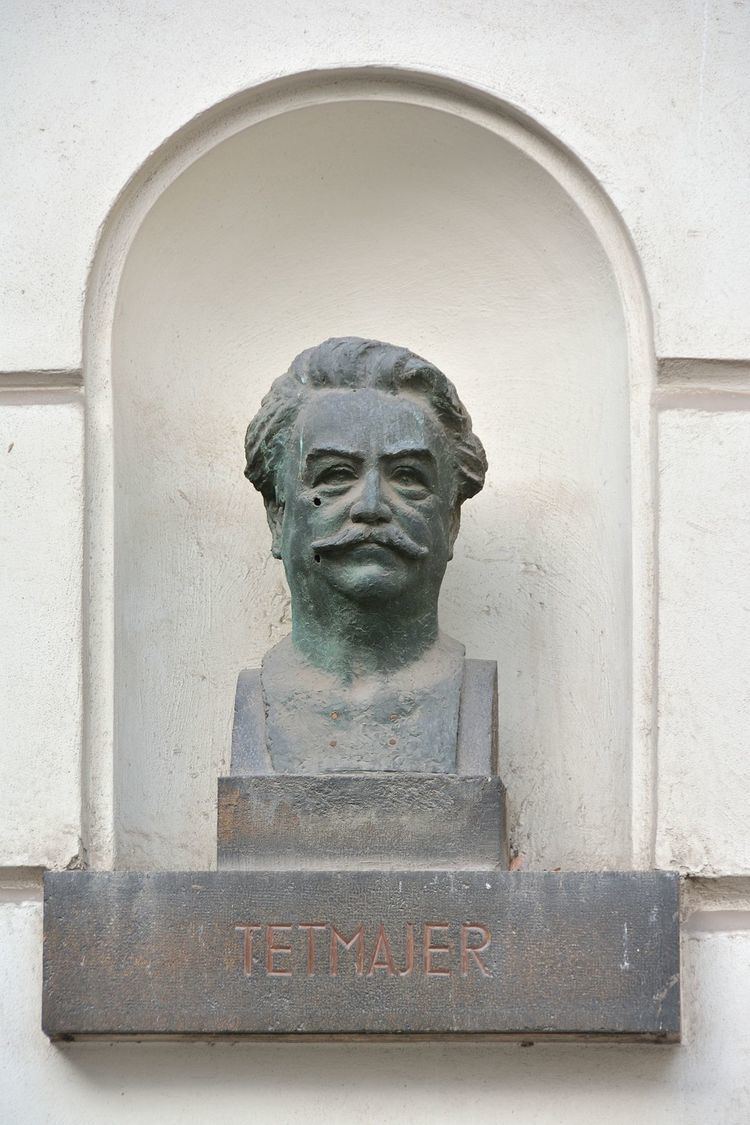Name Ludwig Tetmajer | ||
 | ||
Ludwig von Tetmajer (July 14, 1850, Krompachy, Slovakia - February 1, 1905, Vienna, Austria) was a professor at the Eidgenössischen Polytechnikum, the fore-runner of modern ETH in Zurich. Tetmajer was a pioneer in the development of the research laboratories for determining the physical and mechanical properties of the construction materials and a co-founder of the Festigkeitsprüfungsanstalt, the modern Eidgenossische Materialprüfungs- und Forschungsanstalt (Empa) of Switzerland.
Contents
Life
Ludwig Temajer was born as the second child of Wladyslaw Tetmajer, director of the iron-works in Krompachy (Slovakia) and Luise Elsner. They belonged to the Austro-Swiss branch of the Tetmajer family. His cousins, novelist Kazimierz Przerwa-Tetmajer and painter Włodzimierz Tetmajer, belonged to the Polish branch of the family. He spent his childhood in the vicinity of the iron-works what decisively influenced his life. In 1867 he finished his secondary education cum laude and after a one-year preparatory study he enrolled at the Faculty of Engineering at the Eidgenössischen Polytechnikum in Zurich, Switzerland. In 1872, at the age of 22, he finished his education as a building engineer with the highest marks.
Tetmajer first worked as an intern with the Swiss Northeastern Railway. In 1873, he became an assistant of Carl Culmann from the chair of Statics at the Eidgenössischen Polytechnikum and later the same year became a Privatdozent for the Building Mechanics.
In 1875, he was conscripted and served for a year with the 66th Austro-Hungarian infantry regiment. In order to gain Swiss citizenship he left the army in 1877 as a reserve officer of the 34th infantry regiment.
Having been granted the Swiss citizenship, he married the opera singer Maria Luise Kindermann (March 3, 1852 - June 22, 1912), the daughter of the opera singer August Kindermann on October 24, 1877 in Munich. They had three children: Elsa (born August 26, 1878), August Helmar Rudolf (January 12, 1880 - July 14, 1946), an architect and a chronicler of the family, and Bruno Friedrich (born June 17, 1887), a chemist. In 1878, Tetmajer was appointed an extraordinary professor at the Zurich Polytechnic Institute. In 1880 he was appointed a provisional director of the Festigkeitsprüfungsanstalt and from February 1, 1881 a permanent director of that institution and an ordinary professor for the Building mechanics. He was the president of the newly founded International association for the material testing from 1896.
In 1901, he was appointed Professor of the Technical Mechanics and the Building Materials at Vienna University of Technology, resigning as the head of the Festigkeitsprüfungsanstalt and as a professor at ETH. Tetmajer suffered a stroke on January 31, 1905 and died the following day.
